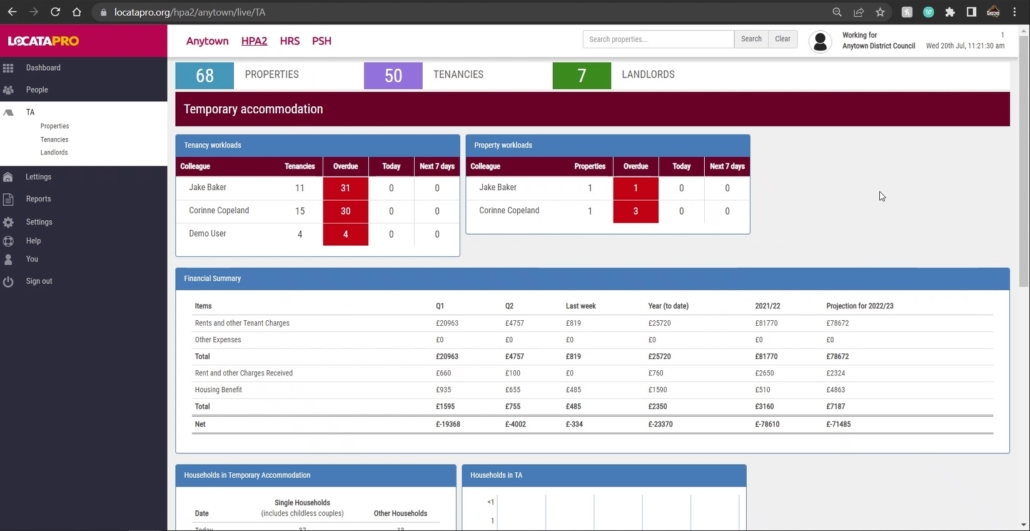Tough times and trade-offs – Campbell Tickell guest blog
3%, 5%, 7%, or as you were at CPI +1% – which could mean 12% rent increases for English social housing in 2023. Which is it to be?
Government insists it is an open consultation – but has made its position clear, that it is minded to implement a 5% cap on social housing rents. This would involve scrapping the final two years of the current CPI +1% settlement, and the cap is likely to run for two years. When the cap was last scrapped, in 2015, we were just two years into a 10 year settlement, when government opted to require a 1% per annum cash reduction for four years (which equated to around CPI -3%). So we’ve seen this before.
The difference this time is that the anticipated reduction is not about pursuing a more generalised policy of austerity in public spending, and keeping benefit bills down. This time it’s about recognising the disastrous effects on social housing residents of this year’s colossal hike in costs of living, in particular the effect on fuel bills. Bluntly, people need help.
The question is, what is the wider cost of that help, and are there unintended consequences? Who is to pay in order to keep rents relatively more affordable?
I discussed the position the other day with a senior executive of a substantial housing provider. The organisation had been modelling the potential effect of a 5% cap. They had established this would lead to a reduction of between a quarter and a third in their annual surplus.
Does this matter? Can’t housing providers wear it? For George Osborne’s 2015 four-year rent reduction, it was understood the Department had been consulting and modelling two options: a 1% per annum rent cut in cash terms, and a 2% cut. The conclusion of this was that housing providers could just about weather 1%, but if it went to 2%, that would kill new development stone dead.
This is the problem we face now. The RP sector may be generating several billion pounds of surplus a year. But that doesn’t make it money that is freely available. The surpluses are needed to fund major repairs and reinvestment programmes, and to enable new housing development. For some organisations, their loan covenants – critical to funding new-build schemes – require that they generate surpluses above certain levels on a continuing basis.
Carry through a 5% rent cap for two years, and what can we expect to see? A number of outcomes can be identified:
- Planned maintenance programmes will be lengthened, and major works will be delayed;
- Decarbonisation works will be put on hold – and we should remember it has been estimated that it will cost £104bn to achieve net zero across UK social housing by 2050 (if even that deadline is soon enough);
- New development will fall significantly – and bear in mind that RPs typically provide one-fifth of new supply each year – at a time when homelessness, including street homelessness, is rising;
- The picture will be especially stark for councils, which lack the reserves that RPs have to draw upon;
- Many small RPs, especially supported housing providers, will be in danger of becoming unviable – while the number of larger RPs able to bale them out will diminish, leading to a risk of some RPs going bust.
This is not to argue that social housing residents, who are likely to face enormous problems getting by – the stark choice of ‘heat or eat’ – should be expected to wear 12% rent increases next year. It does mean government should look seriously at what funding can be made available to social landlords, to enable them to continue providing good quality homes and support, and develop the new homes the country needs
Campbell Tickell hosts a WhatsApp group of over 220 housing CEOs from across the UK and Ireland. The platform has been alive in recent weeks with contributions from senior leaders – facing that 5% cap – gravely concerned about their ability to access the funds to ensure their homes are safe and fireproof, continue to advance decarbonisation, continue to build to meet housing demand, and indeed continue to keep their organisations viable.
If government is serious about the health, safety and quality of the homes in which social housing residents live, the need to continue towards net zero and eradicate fuel poverty, and the need to develop new homes to meet demand and address homelessness, it has to act.
Different approaches are possible. It could be about grant support to enable social landlords to keep rents low while meeting their safety and new supply expectations – after all, the savings in benefits to the Treasury of lower rents would be considerably more than the combined savings to tenants. It could be via a ‘catch-up’ mechanism, allowing higher rent rises over a five or even 10 year period following the initial two year limitation. And indeed, as Paradigm Housing CEO Matthew Bailes has argued, it could make better sense to fund support via a windfall tax on energy companies than by what is in effect a tax on non-profit social landlords.
Most immediately for the housing sector, responses to the Department’s consultation are needed by Wednesday 12 October. The more informed the responses about the effects on individual organisations, the better.
Greg Campbell is a Partner at Campbell Tickell.




